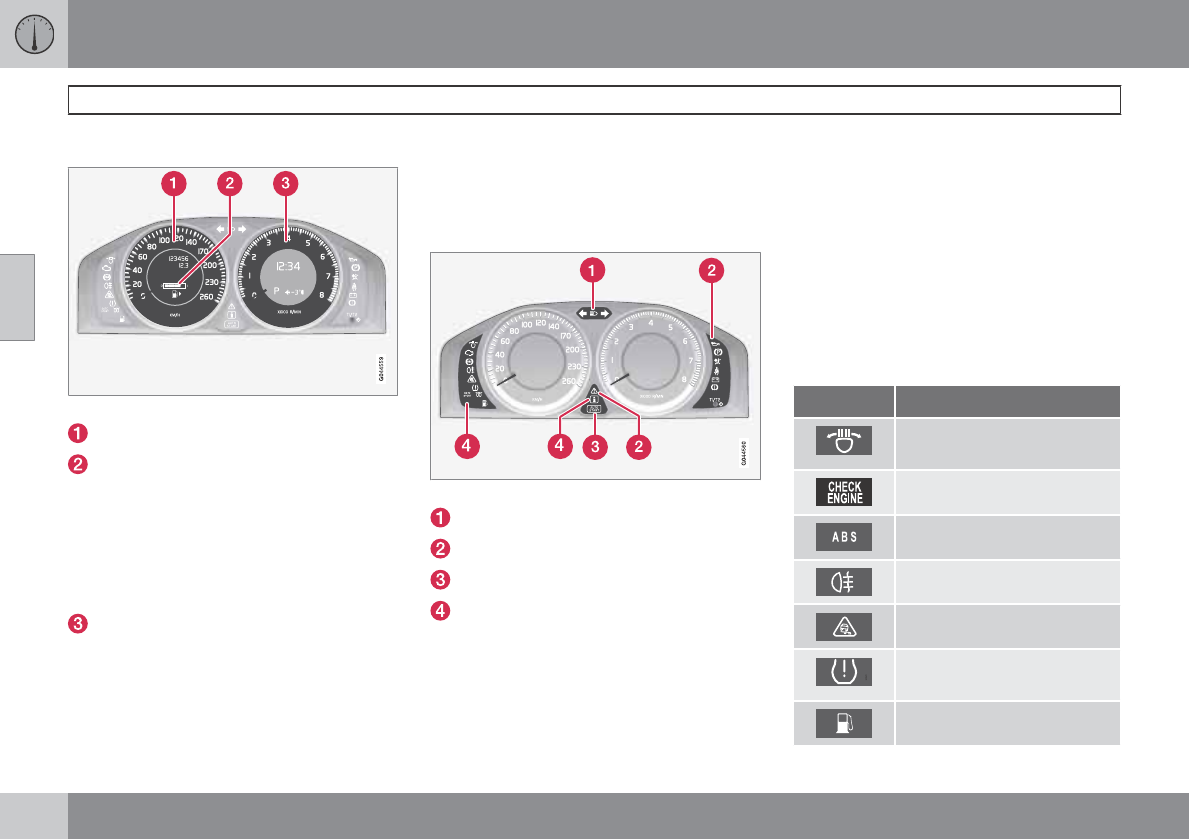
03 Your driving environment
Instruments and controls
03
80
* Option/accessory, for more information, see Introduction.
Gauges
Gauges in the instrument panel
Speedometer
Fuel gauge. Please note that the fuel level
indicator in the gauge moves from right to
left as the amount of fuel in the tank
decreases. The arrow indicates the side of
the vehicle that the fuel filler door is on. See
also the section on refueling beginning on
page 254. See page 147 for more infor-
mation on fuel level and consumption.
The tachometer shows engine speed in
thousands of revolutions per minute (rpm).
Do not drive continuously with the needle
in the red area of the gauge. The engine
management system will automatically
prevent excessively high engines speeds.
This will be noticeable as a pronounced
unevenness in engine speed.
Indicator, information, and warning
symbols
Indicator and warning symbols
High beam and turn signal indicators
Indicator and warning symbols
Information symbols
Indicator and warning symbols
Function check
All indicator and warning symbols light up in
ignition mode II or when the engine is started.
When the engine has started, all the symbols
should go out except the parking brake sym-
bol, which only goes out when the brake is dis-
engaged.
If the engine does not start or if the function
check is carried out in ignition mode II, all sym-
bols go out after 5 seconds except the symbol
for faults in the vehicle's emissions system and
the symbol for low oil pressure.
Certain symbols may not have their functions
illustrated, depending on the vehicle's equip-
ment.
Indicator and information symbols
Symbol Description
Fault in the Active Bending
Light (ABL)*system
Malfunction indicator light
Anti-lock brake system (ABS)
Rear fog light on
Stability system
Tire pressure monitoring sen-
sor (TPMS)
Low fuel level


















